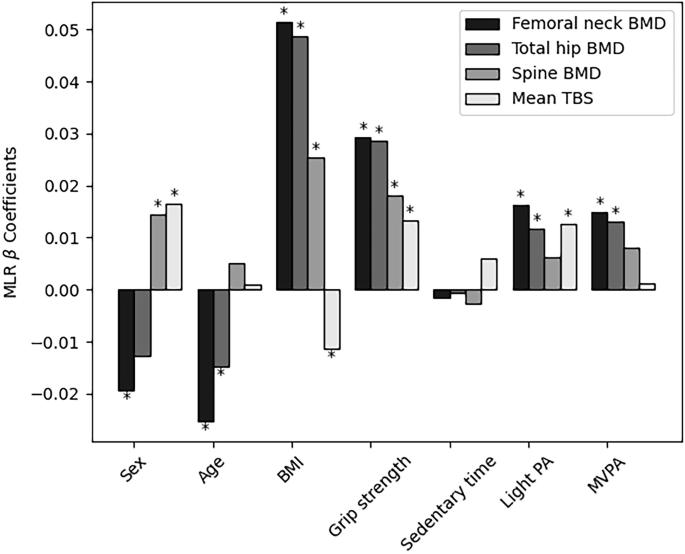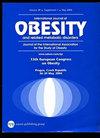The influence of physical activity intensity on bone mineral density and trabecular bone score in young adults with overweight and obesity
IF 3.8
2区 医学
Q1 ENDOCRINOLOGY & METABOLISM
引用次数: 0
Abstract
This study examines how physical activity intensity, body mass index (BMI), and grip strength interact with bone health indicators—specifically areal bone mineral density (BMD) and Trabecular Bone Score (TBS)—in young adults with overweight and obesity. This research aims to clarify these relationships to inform effective physical activity interventions for this demographic. Data from 638 young adults (aged 18–35 years) participating in a weight loss randomized clinical trial was analyzed. Multiple Linear Regression (MLR) was utilized to assess the impact of physical activity, BMI, and grip strength on BMD and TBS. Significant correlations were found between femoral neck BMD and age (β = −0.0056, p < 0.001), BMI (β = 0.0140, p < 0.001), grip strength (β = 0.2865, p < 0.001), light physical activity (β = 0.0002, p < 0.01) and moderate-to-vigorous physical activity (MVPA) (β = 0.0006, p < 0.01) physical activity intensities. Total hip BMD showed similar associations. Analyses of spine BMD and mean TBS highlighted the positive impacts of BMI and grip strength, with light physical activity also benefiting TBS. The study confirms the beneficial effects of light activity and MVPA on femoral neck and total hip BMD, challenging the traditional perception that higher body weight positively impacts bone health by revealing a negative correlation between BMI and TBS. Grip strength’s consistent association with better bone health outcomes underlines the critical role of muscular strength.

体力活动强度对超重和肥胖青年骨密度和骨小梁评分的影响。
简介:本研究探讨了超重和肥胖的年轻成年人的身体活动强度、体重指数(BMI)和握力与骨骼健康指标(特别是骨矿物质密度(BMD)和骨小梁评分(TBS))的相互作用。本研究旨在澄清这些关系,为这一人群提供有效的体育活动干预措施。方法:对参加一项减肥随机临床试验的638名年轻人(18-35岁)的数据进行分析。采用多元线性回归(MLR)评估体力活动、BMI和握力对BMD和TBS的影响。讨论:该研究证实了轻度运动和MVPA对股骨颈和全髋关节骨密度的有益作用,通过揭示BMI和TBS之间的负相关,挑战了高体重对骨骼健康有积极影响的传统观念。握力与更好的骨骼健康结果的一致关联强调了肌肉力量的关键作用。
本文章由计算机程序翻译,如有差异,请以英文原文为准。
求助全文
约1分钟内获得全文
求助全文
来源期刊

International Journal of Obesity
医学-内分泌学与代谢
CiteScore
10.00
自引率
2.00%
发文量
221
审稿时长
3 months
期刊介绍:
The International Journal of Obesity is a multi-disciplinary forum for research describing basic, clinical and applied studies in biochemistry, physiology, genetics and nutrition, molecular, metabolic, psychological and epidemiological aspects of obesity and related disorders.
We publish a range of content types including original research articles, technical reports, reviews, correspondence and brief communications that elaborate on significant advances in the field and cover topical issues.
 求助内容:
求助内容: 应助结果提醒方式:
应助结果提醒方式:


